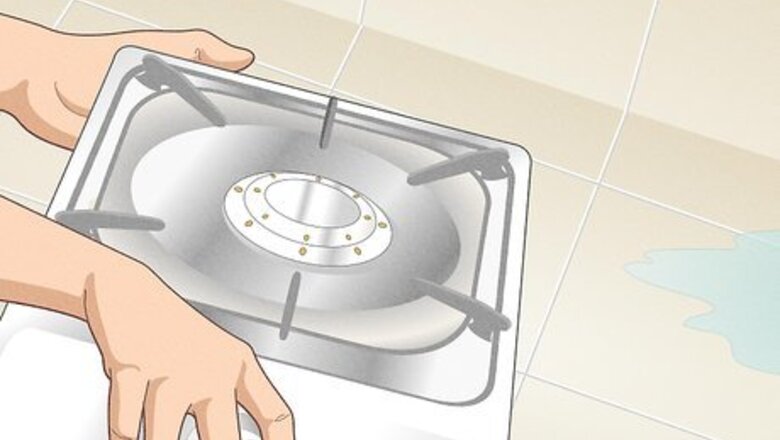
views
- Quickly remove anything that could produce a spark or flame, and ventilate the area by opening the doors and windows.
- Put on a pair of gloves, and clean up the spill with paper towels.
- Soak up larger spills with sand, then scoop the sand into a container and wipe up any residue with paper towels. Toss it all into a hazardous waste container.
Wiping up Small Spills

Remove any flame-producing objects in the area. Isopropyl alcohol is extremely flammable, and it can catch fire very easily. Make sure there aren’t any lighters, stoves, or open flames that could cause a spark nearby. If you can’t remove a flammable object, make sure it’s turned all the way off.
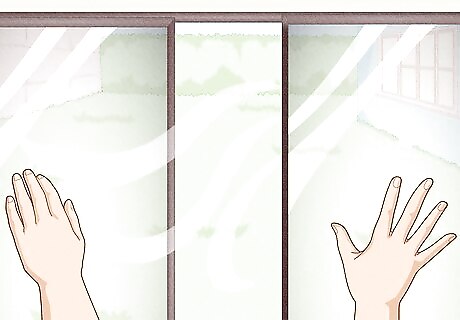
Open the doors and windows to ventilate the area. The fumes from isopropyl alcohol can be dangerous when inhaled, and can cause dizziness and nausea. Before you start cleaning up, open up all the doors and windows that you can to let the fumes dissipate into the air. If there aren’t any doors or windows in the area, try to work fast and take breaks while cleaning if you need to.
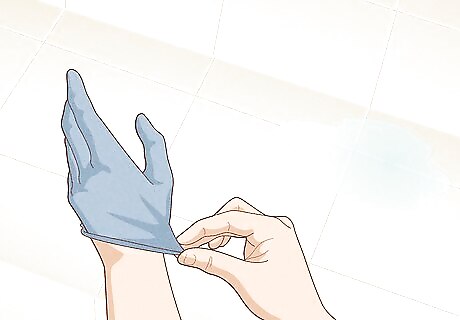
Put on a pair of latex or nitrile gloves. Isopropyl alcohol can cause skin irritation if it touches you. Pull on a pair of gloves to protect your hands while you’re cleaning up. You can also use rubber gloves if you don’t have any latex or nitrile ones. If you don’t have gloves, try to touch the alcohol as little as possible and wash your hands with soap and water as soon as you’re done cleaning.
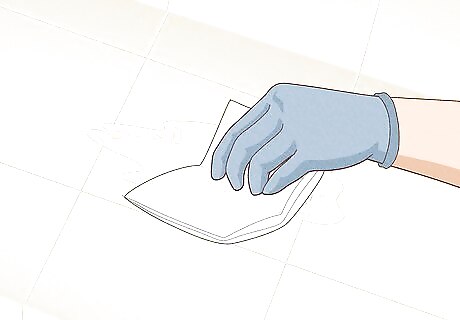
Wipe up the isopropyl alcohol with paper towels. Grab a roll of paper towels and lay a few sheets on top of the spill. Let them soak up the alcohol, then gather them up with your gloved hands. Then, use dry paper towels to wipe away the remaining alcohol. If the surface is still slightly damp after you finish wiping up the alcohol, that's fine. Alcohol evaporates quickly, so it shouldn't take long to dry.
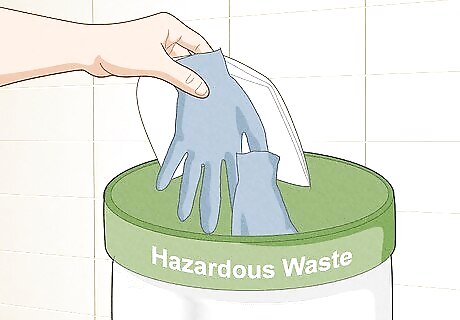
Put the paper towels and gloves in a hazardous waste container. Most state and local counties regulate isopropyl alcohol as a hazardous material. Dispose of the paper towels you used and your gloves in a hazardous waste container, if you can. Check with your local landfill to see if they accept hazardous waste materials. Never wash isopropyl alcohol down the drain, as it can harm the living organisms in waterways.
Handling Larger Spills

Open all the doors and windows in the area. Large spills can produce a lot of fumes, which can be dangerous if inhaled over a long period of time. Ventilate the area as much as you can by opening all the doors and windows. If there aren’t any doors or windows nearby, evacuate all personnel until the fumes have cleared out.
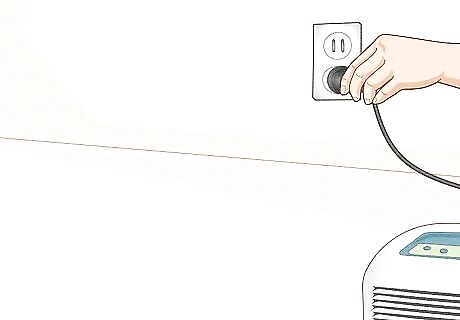
Remove any objects that could produce a flame. Isopropyl alcohol is extremely flammable, especially in large quantities. Take away any lighters and electronics until the area is secure. If you have anything plugged into an outlet nearby, unplug it immediately if it’s safe to do so.
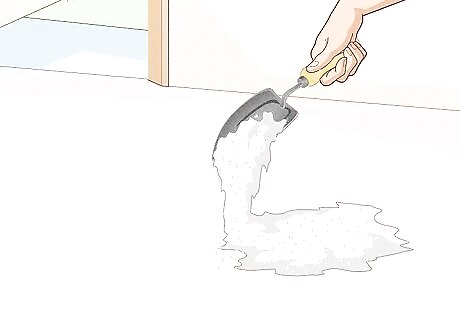
Pour sand or dirt over the alcohol. You can use sand, dirt, or any non combustible material to soak up isopropyl alcohol. Dump the substance over the entire spill to make sure it all gets absorbed. If you work in a lab, it may be handy to keep large quantities of sand or dirt on hand in case of spills.
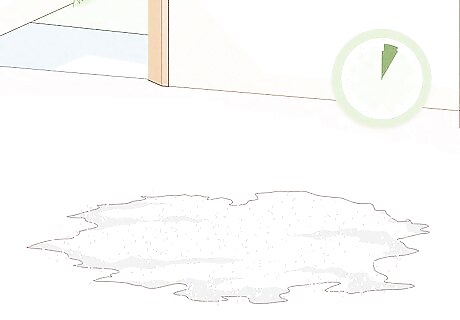
Wait about 5 minutes for the alcohol to absorb. It won’t take long for the sand or dirt to soak in the alcohol. If you notice any areas need more sand or dirt, you can add it on top of the layer you already put down. Watch for a slightly darker color in the sand or dirt to know that it has absorbed the alcohol.
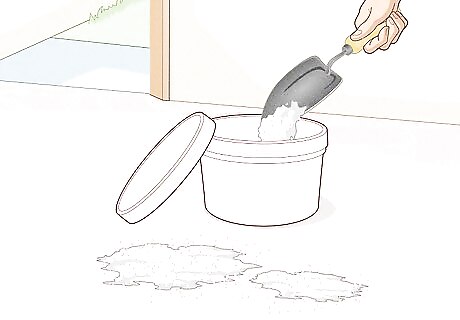
Scoop the sand or dirt into a sealed container. Use a shovel or a spade to scoop the sand or dirt into containers that have lids on them. If there is any sand or dirt residue left on the floor, use paper towels to wipe it up and put it into the containers as well. The containers must be sealed so that the alcohol doesn’t seep into the rest of the waste.
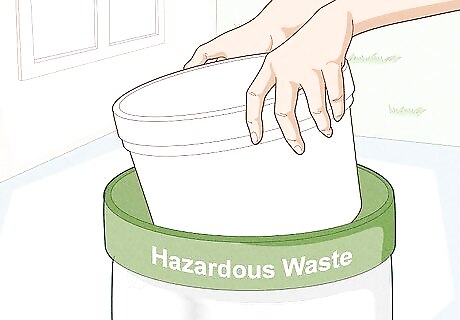
Dispose of the sand or dirt in a hazardous waste container. Most states and counties require that isopropyl alcohol be disposed of in a hazardous waste container, especially in large quantities. Place the containers into a hazardous waste bin with the lids on so they can be thrown away properly.
Dealing with Exposure to Alcohol
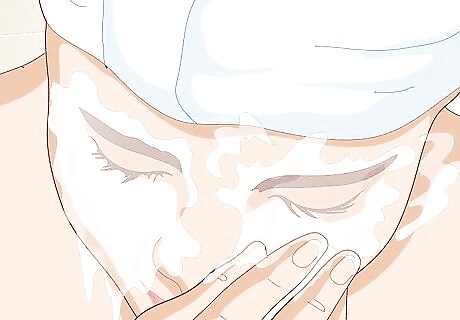
Flush your eyes with water if you get isopropyl alcohol in them. Head to an eyewash station or a sink and run cold water into your open eyes for at least 10 minutes. If you’re wearing contacts, take them out before flushing your eyes. Isopropyl alcohol can cause burning, itching, and irritation in your eyes. Always wear goggles when working with isopropyl alcohol.

Wash your skin with soap and water. Although isopropyl alcohol isn’t very strong, it can cause redness and irritation if you get it on your skin. Rinse the alcohol off with water and use soap to scrub the area immediately. Always wear gloves when working with isopropyl alcohol to prevent skin contact.
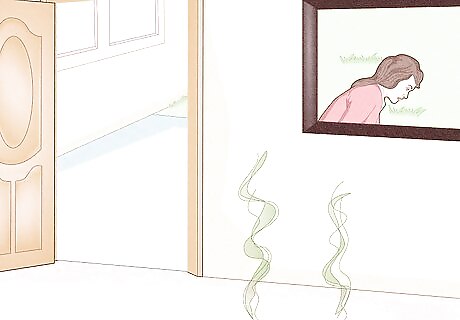
Remove yourself from the area if you inhale isopropyl alcohol. If you’ve inhaled the fumes from isopropyl alcohol, you may feel dizzy, lightheaded, or nauseous. Get away from the fumes as soon as you can and breathe some fresh, unpolluted air until the symptoms subside. If you have any trouble breathing or getting a full breath, seek emergency services right away.
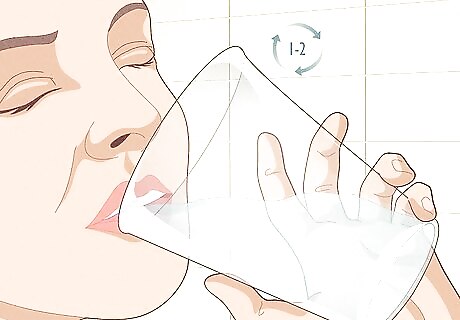
Drink 1 to 2 glasses of water if you ingest isopropyl alcohol. If you accidentally drink or ingest isopropyl alcohol, quickly drink 1 to 2 glasses of water to dilute the alcohol in your stomach. You may feel nauseous, get a headache, or throw up. If you ingest large amounts of isopropyl alcohol or a child ingests isopropyl alcohol, contact poison control at (800) 222-1222.



















Comments
0 comment